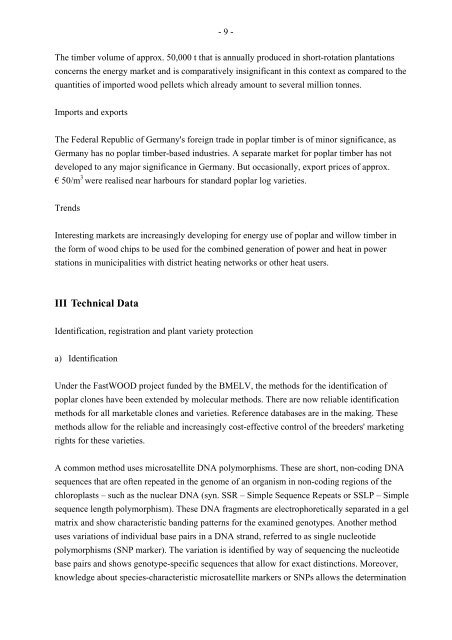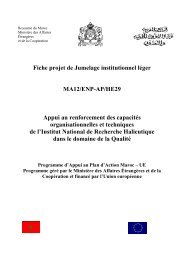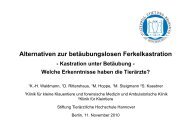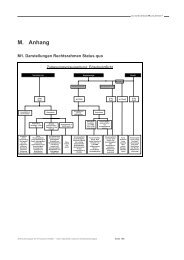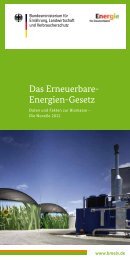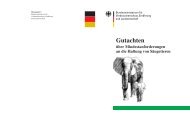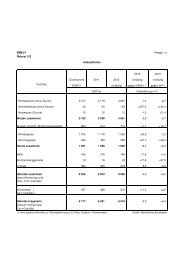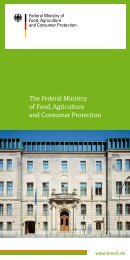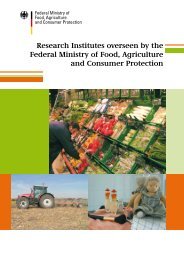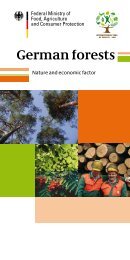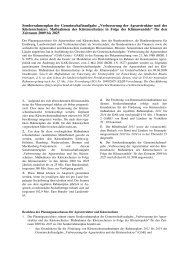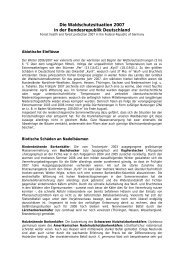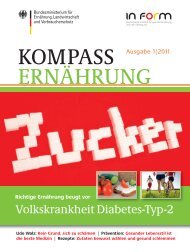Poplars and Willows in Germany: Report of the National ... - BMELV
Poplars and Willows in Germany: Report of the National ... - BMELV
Poplars and Willows in Germany: Report of the National ... - BMELV
You also want an ePaper? Increase the reach of your titles
YUMPU automatically turns print PDFs into web optimized ePapers that Google loves.
- 9 -<br />
The timber volume <strong>of</strong> approx. 50,000 t that is annually produced <strong>in</strong> short-rotation plantations<br />
concerns <strong>the</strong> energy market <strong>and</strong> is comparatively <strong>in</strong>significant <strong>in</strong> this context as compared to <strong>the</strong><br />
quantities <strong>of</strong> imported wood pellets which already amount to several million tonnes.<br />
Imports <strong>and</strong> exports<br />
The Federal Republic <strong>of</strong> <strong>Germany</strong>'s foreign trade <strong>in</strong> poplar timber is <strong>of</strong> m<strong>in</strong>or significance, as<br />
<strong>Germany</strong> has no poplar timber-based <strong>in</strong>dustries. A separate market for poplar timber has not<br />
developed to any major significance <strong>in</strong> <strong>Germany</strong>. But occasionally, export prices <strong>of</strong> approx.<br />
€ 50/m 3 were realised near harbours for st<strong>and</strong>ard poplar log varieties.<br />
Trends<br />
Interest<strong>in</strong>g markets are <strong>in</strong>creas<strong>in</strong>gly develop<strong>in</strong>g for energy use <strong>of</strong> poplar <strong>and</strong> willow timber <strong>in</strong><br />
<strong>the</strong> form <strong>of</strong> wood chips to be used for <strong>the</strong> comb<strong>in</strong>ed generation <strong>of</strong> power <strong>and</strong> heat <strong>in</strong> power<br />
stations <strong>in</strong> municipalities with district heat<strong>in</strong>g networks or o<strong>the</strong>r heat users.<br />
III Technical Data<br />
Identification, registration <strong>and</strong> plant variety protection<br />
a) Identification<br />
Under <strong>the</strong> FastWOOD project funded by <strong>the</strong> <strong>BMELV</strong>, <strong>the</strong> methods for <strong>the</strong> identification <strong>of</strong><br />
poplar clones have been extended by molecular methods. There are now reliable identification<br />
methods for all marketable clones <strong>and</strong> varieties. Reference databases are <strong>in</strong> <strong>the</strong> mak<strong>in</strong>g. These<br />
methods allow for <strong>the</strong> reliable <strong>and</strong> <strong>in</strong>creas<strong>in</strong>gly cost-effective control <strong>of</strong> <strong>the</strong> breeders' market<strong>in</strong>g<br />
rights for <strong>the</strong>se varieties.<br />
A common method uses microsatellite DNA polymorphisms. These are short, non-cod<strong>in</strong>g DNA<br />
sequences that are <strong>of</strong>ten repeated <strong>in</strong> <strong>the</strong> genome <strong>of</strong> an organism <strong>in</strong> non-cod<strong>in</strong>g regions <strong>of</strong> <strong>the</strong><br />
chloroplasts – such as <strong>the</strong> nuclear DNA (syn. SSR – Simple Sequence Repeats or SSLP – Simple<br />
sequence length polymorphism). These DNA fragments are electrophoretically separated <strong>in</strong> a gel<br />
matrix <strong>and</strong> show characteristic b<strong>and</strong><strong>in</strong>g patterns for <strong>the</strong> exam<strong>in</strong>ed genotypes. Ano<strong>the</strong>r method<br />
uses variations <strong>of</strong> <strong>in</strong>dividual base pairs <strong>in</strong> a DNA str<strong>and</strong>, referred to as s<strong>in</strong>gle nucleotide<br />
polymorphisms (SNP marker). The variation is identified by way <strong>of</strong> sequenc<strong>in</strong>g <strong>the</strong> nucleotide<br />
base pairs <strong>and</strong> shows genotype-specific sequences that allow for exact dist<strong>in</strong>ctions. Moreover,<br />
knowledge about species-characteristic microsatellite markers or SNPs allows <strong>the</strong> determ<strong>in</strong>ation


